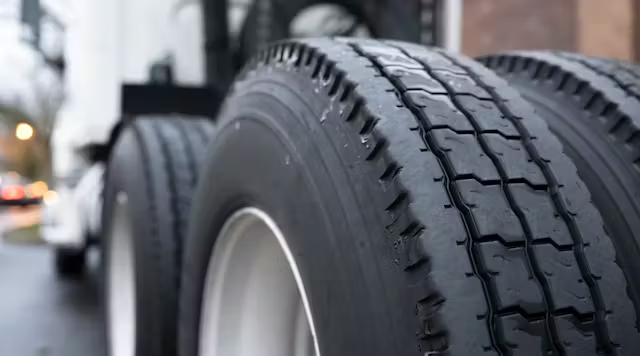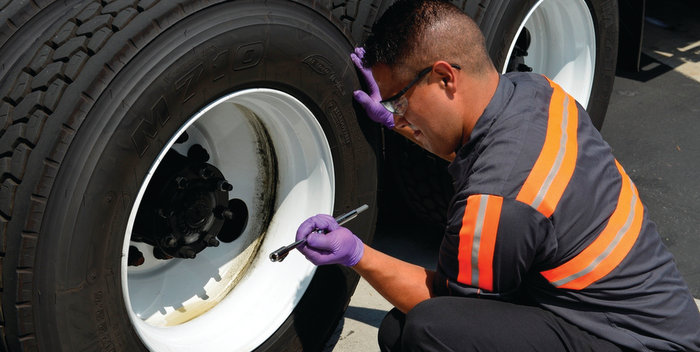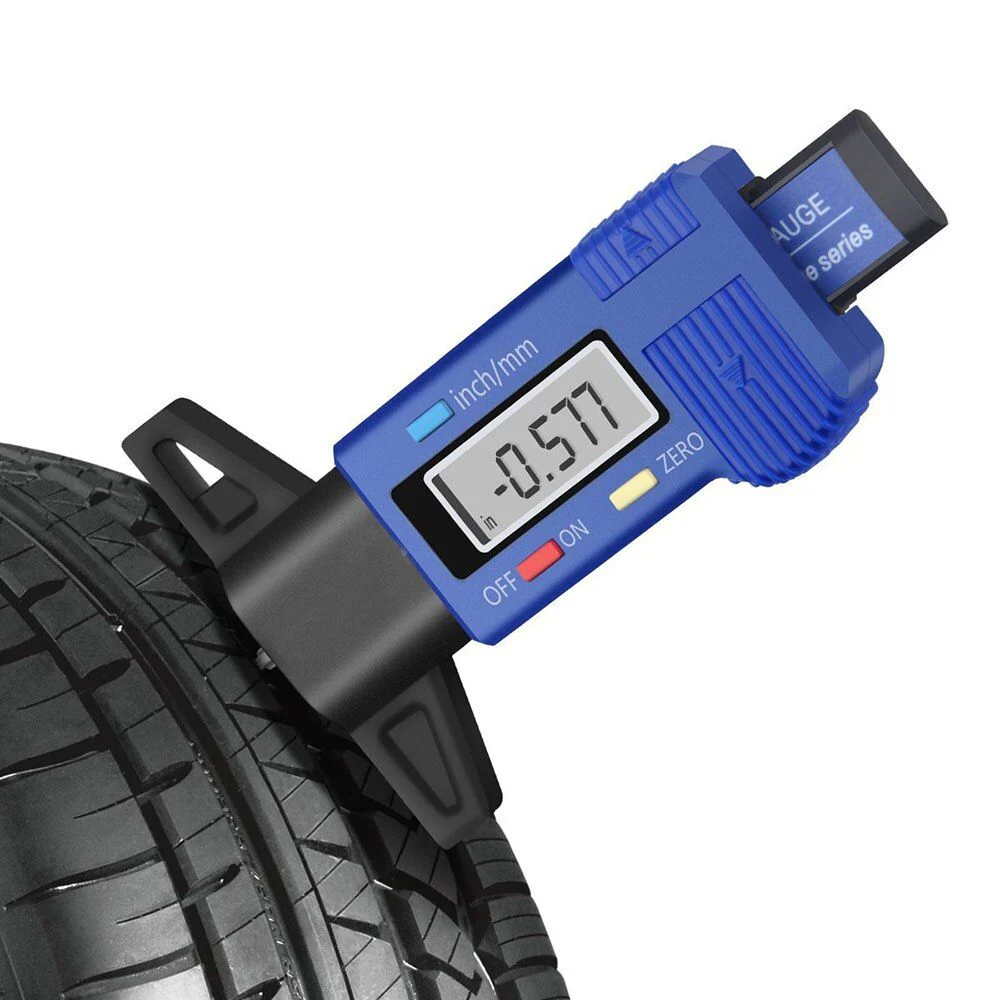Maintaining proper CDL tire tread depth is one of the most important when you work as a CDL driver. As CDL tire tread depth plays a crucial role in ensuring safe handling, effective braking, and maximum life for long-haul tires. The following guide has covered all that a truck driver should know about the requirements regarding tire tread depth, ways of measurement, and main tips of maintenance of the CDL. Knowing such tips and following them will not only keep you safe on the road but also contribute to fuel efficiency and lower risks of expensive tire problems.
What is CDL tire tread depth?
The CDL tire tread depth is the minimum tread measurement for specific tires that a commercial driver with a CDL needs to have to fulfill the requirements by the Department of Transportation. The DOT and the Federal Motor Carrier Safety Administration have defined the tire tread depth so that the commercial vehicles are fitted with safe and roadworthy tires, which will help in reducing the occurrence of accidents due to poor traction and tire failure.

Tread depth is defined as the vertical dimension from the bottom of the tire tread groove to the top of the tread surface. It becomes the crucial depth, whereby it directly impacts a tire’s grip on the road in less-than-ideal weather conditions, such as rain or snow. Tires with shallow tread depths are prone to issues that include hydroplaning and loss of traction, along with longer stopping distances-all potentially heightening the risk of an accident.
DOT regulation on CDL tire tread depth
The Federal Motor Carrier Safety Administration requires that the tire tread depths are such that assure other motorists that any commercial vehicle on the road is safe to operate: not only for the driver, but for all others in its proximity. Appropriate tread depth is very critical in maintaining control and avoiding tire skidding and that the vehicle is capable of stopping, especially on wet or hazardous roads.

Here is a breakdown of what FMCSA requires:
Steering tires (front tires)
According to the FMCSA regulation, the steering tires of a commercial vehicle should have a tread depth of at least 4/32 of an inch. Since the front tires are used for maneuvering the vehicle, they are supposed to have deeper treads to retain adequate traction for better handling with the addition of minimizing hydroplaning.
Rear and trailer tires
The minimum tread depth for all tires other than front tires should be 2/32 of an inch, according to FMCSA. Although the rear and trailer tires do not take part in the steering performance of the vehicle, the tires at the rear and on the trailer still have to be sufficiently deep to carry the weight of the vehicle and provide stability and effective braking.
Regular checks
As part of regular safety inspections and the CDL pre-trip inspection, drivers must make regular checks in relation to the depth of the tire tread. These should at least meet or exceed the following minimums. Tires below this minimum threshold may be subject to penalties, fines, or even taken out of service until the situation is remedied.
Adequate tread depth is vitally important for maintaining traction, especially on wet or slippery pavement. Tires with good tread depth prevent skidding and improve stopping distances, while worn tires increase the risk of loss of vehicle control, particularly under emergency conditions. By following FMCSA regulations concerning tire tread depth, CDL drivers will be in a better position to reduce the risks of accident involvement, thus making the road much safer for one and all.
What is the minimum tread depth for front tires CDL?
The minimum required tread depth according to FMCSA regulation is 4/32 of an inch for the front-steering tires on commercial vehicles. All commercial vehicles fall in this category to ensure that the steering tires have enough traction and control, especially in wet or snowy conditions.

Why the emphasis on front tires? The steering tires carry a big burden in maneuvering and braking. Because they have a direct effect on the truck’s capability to grasp the road surface, sufficient tread depth becomes essential for stability and safe handling. If the front tires have less than 4/32 inch tread depth, it is highly vulnerable to hydroplaning on wet roads and may fail during emergency stops.
How to measure CDL tire tread depth?
This is the regular practice of CDL drivers that they have to follow in order to remain compliant with safety parameters and motivate safe driving. Tread depth can be checked in several ways, right from using specific tools to conducting quick visual checks. Let’s take a closer look at each method:
Tread depth gauge
A tread depth gauge is a small, inexpensive tool designed solely to measure the depth of tire tread. It provides the driver with an exact measurement so you can immediately tell if your tires match FMCSA minimum requirements. To use it:
- Place the probe of the gauge into the deepest groove in the tread of the tire.
- Push down until the base of the gauge is flush with the tread of the tire.
- Read the measurement on the gauge. If the gauge shows 4/32 of an inch or more for front tires and 2/32 of an inch or more for other tires, your tires meet the minimum tread depth standards for CDL vehicles.

Penny test
The penny test is one of the quickest and easiest ways to get a rough reading of your tire tread depth. Not as precise as a gauge, but nonetheless, it should show you whether your tread is within the minimum legal limit or not. Here’s how you can do it:
- Take a penny and insert it into the groove of your tire, with Lincoln’s head down.
- If the top of Lincoln’s head is completely visible, that means your tread depth is less than 2/32 of an inch and it’s time for a replacement. If part of Lincoln’s head is covered, your tread depth is likely adequate.
Important note: The penny test works best for a quick rear and trailer tire check. For the front tires, which do require the more generous 4/32 inch of tread depth, a tread depth gauge is better.

Visual inspection
Many CDL tires have tread wear indicators that can help you visually check tread depth. The indicators are small raised bars or sections within the tire grooves, which provide an instant visual indication when a tire has reached its minimum tread depth.
- Look for tread wear indicators in the grooves of your tires.
- These marks are the wear indicators, and when the tread is flush with them, the tire has worn down to its legal limit.
Noted: A visual inspection is a pretty decent method but, again, is best used as a supplemental technique. For accuracy, employ in combination with either a tread depth gauge or the penny test, at least for the more critical front tires, with their higher minimum depth specification.

Tips for maintenance CDL tire tread
Regular maintenance surely prolongs the life of truck tires and keeps you within CDL compliance. Here are a few tips that will help:
- Rotate tires regularly: The rotation of tires will ensure that all the wear is uniformly distributed across all tires, something quite crucial for the tread depth consistency of CDL vehicles.
- Maintain proper tire pressure: A tire that is inflated too much or too little will wear down unevenly and can compromise tread depth sooner. Check and adjust tire pressure according to the recommendations of the manufacturer.
- Avoid overloading: Overloaded trucks put too much pressure on the tires, which causes wear to take place rapidly on their treads. Never overload beyond weight limits if you want your tires to last long.
- Cuts or punctures check: Pieces of road debris, sharp objects, and curb impacts may slice or puncture the tire, thus letting the air penetrate causing a failure of the tire tread. These problems could be ascertained through periodic checks.
FAQs
1. How much tread depth should a tire have in a CDL?
According to CDL rules, for a front tire, the minimum depth of the tread must be 4/32 of an inch and for all other tires, the minimum depth is 2/32 of an inch.
2. Why is it important to check the tire tread depth on CDL trucks?
Checking the depth of tread in tires keeps drivers within the law, minimizing the chances of being involved in an accident. Good depth helps in the area of traction, handling, and even braking in poor conditions; thus, it becomes a vital ingredient in driver safety.
Final thoughts
Paying attention to CDL tire tread depth is simple responsible maintenance for CDL truck drivers. Not only does it keep you in good graces with FMCSA regulations, but it also has to do with much safer roads and better tire performance. Frequent measurement of tread depth, combined with tire rotation and periodic maintenance, should enable the CDL driver to extend the time when a tire will be worn out, lower the risk of failure, and help the general interest of safety on the road.



